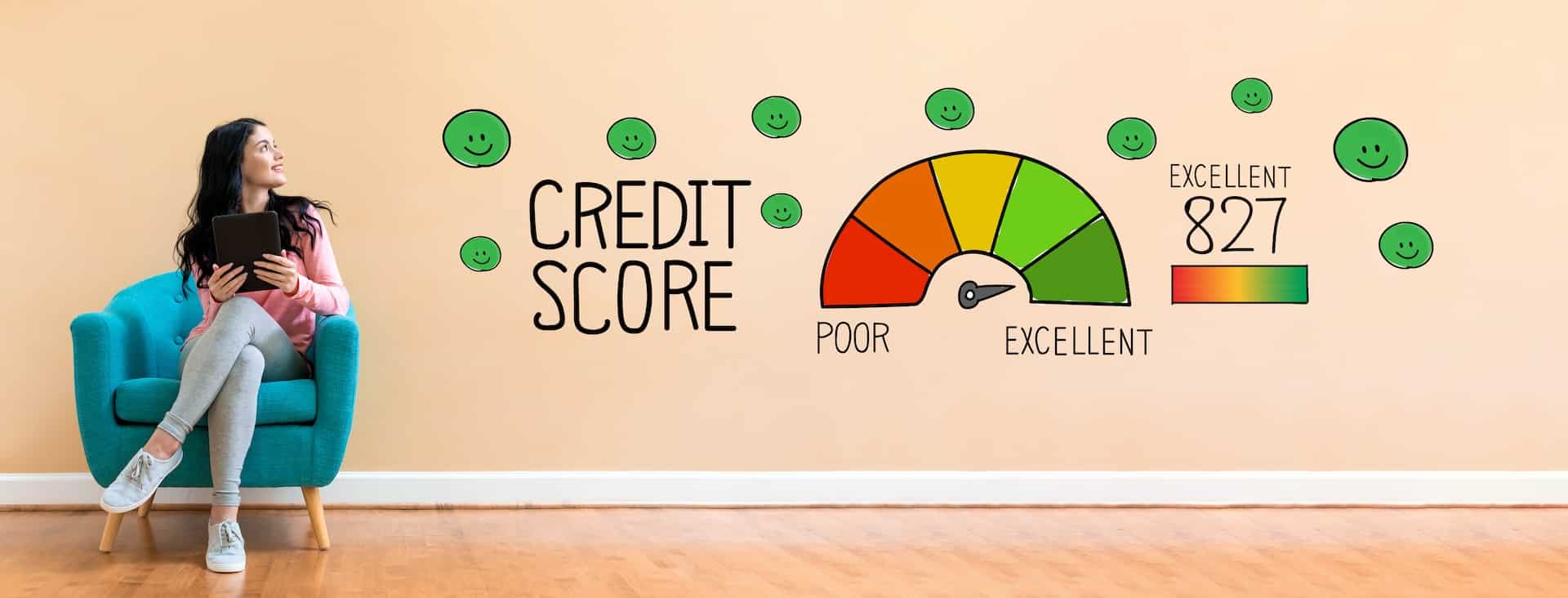Credit Sesame’s tips for understanding your credit score and credit report.
Understanding your credit scores is beneficial for your financial health. They’re so important that an entire industry exists just to monitor and report your credit score.
So, what does that three-digit number really mean? In a nutshell, it tells lenders how responsible you are with managing debt and your money in general. If you pay your bills on time and don’t carry a lot of debt, you’re considered a “good” credit risk. Generally, that makes it easier to get loans, credit cards, or a mortgage and snag the best interest rates while you’re at it. If you’re always running behind on your bills or you’ve got some big balances on your credit cards, your credit outlook won’t be as rosy.
There is some mythology about how credit scores work, so here’s our user-friendly guide to credit reporting and scoring.
How credit reports are created
The vast majority of credit reports and credit scores come from the big three credit bureaus: Experian, Equifax, or TransUnion. These three companies use information from your creditors (the companies you owe money to) to make up your credit report. Here’s what you can expect to see on your credit report:
- Your personal details, including current and past addresses, your Social Security number and work history
- A list of your credit accounts, including balances, payment history and recent activity
- Public records linked to debts, such as bankruptcies, foreclosures or wage garnishments
- The number of times you’ve applied for new credit over the past two years
Chances are, your credit reports with each credit bureau won’t be identical. Lenders can pick and choose which bureaus they report to, so you might see information on one of your reports that doesn’t show up on the other two.
Understanding your credit scores by the numbers
All the information on your credit report is what’s used to calculate your credit score. Actually, you have several credit scores. Usually, they are similar, and if they are very different, it may be because there are errors on your credit report. The most commonly used scores are VantageScore and FICOscore. The precise calculation varies, but there are five important factors used by both scoring methods:
1. Payment history (35 percent)
On-time payments mean a higher score. Late payments, delinquent or overlimit accounts, bankruptcies, and liens can cause major damage.
2. Credit utilization (30 percent)
This is also called “revolving utilization,” which is a fancy term for the amount of debt you owe versus your overall credit line. Ideally, the target utilization ratio you should be shooting for is less than 10 percent since a lower ratio generally translates to a higher score. If you’re close to, or at your limit on multiple cards, that’s going to drag your score down.
Figuring out your utilization ratio isn’t all that difficult. Start by getting a copy of your credit report and listing all of your credit card accounts, including the balance owed and each card’s credit line. Don’t include closed accounts. Next, add up all of your balances and credit lines. You should have two different numbers representing what you owe and how much credit you have available in total. The final step is dividing your total balance by your total credit line and multiplying the answer by 100 to get a percentage. Here’s an example so you can see how it works. Let’s say you have $1,500 in credit card debt but a total credit limit of $25,000. The math would look like this:
- $1,500 ÷ $25,000 = 0.06
- 0.06 x 100 = 6%
As you can see, the credit utilization comes out to 6 percent, which is good for your score. You can also do this calculation individually for each card to see what your utilization ratio is with each of your creditors. Either way, this will give you a good idea of how lenders see you in terms of your risk level.
On a final note, don’t assume that your utilization ratio would be zero if you pay in full each month. The balance that shows up on your credit reports is the same as the balance from your most recent statement, which means even if you pay your bill in full each month, you’re likely to have a balance if you’ve used your card at all in the past 30 days.
3. Length of credit history (15 percent)
This shows how long you’ve been using credit and how you’ve managed your finances in the past. The longer your credit history the better, so hold off on closing accounts that are older even if you don’t use them.
4. New credit accounts and inquiries (10 percent)
This includes accounts you’ve opened recently and inquiries from companies you’ve applied to for credit. Credit inquiries linger on your credit report for two years but they’re only factored into your credit score for the first 12 months. If you’re going to apply for new credit, make sure you’re spreading the inquiries out over time to minimize their impact on your score.
5. Credit mix (10 percent)
Having credit cards can be a great way to build credit, but lenders also want to see that you can manage other types of debt, such as installment loans and mortgages.
Don’t turn a blind eye to your credit
Lenders, creditors, and credit bureaus keep an eye on your credit, and so should you. Experts recommend that you review your credit reports at all three bureaus at least once a year to check for inaccuracies. If you do find errors, don’t waste any time in disputing it to get it resolved. More frequent credit monitoring can be helpful, especially if you want to build your credit score before applying for a new credit card, mortgage, or other loan.
Your credit score is your responsibility. Turning good payment and credit usage behaviors into a regular habit can keep your score on solid ground.
If you enjoyed Tips for understanding your credit score you may like,
Disclaimer: The article and information provided here is for informational purposes only and is not intended as a substitute for professional advice.
Read the full article here

















